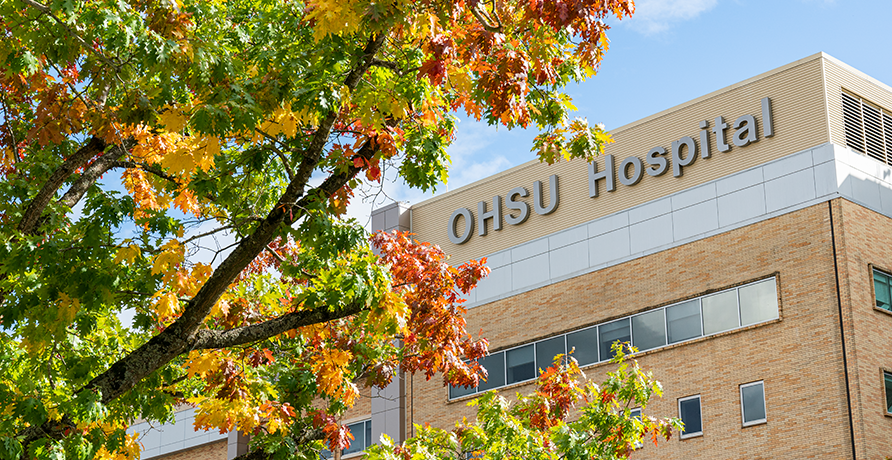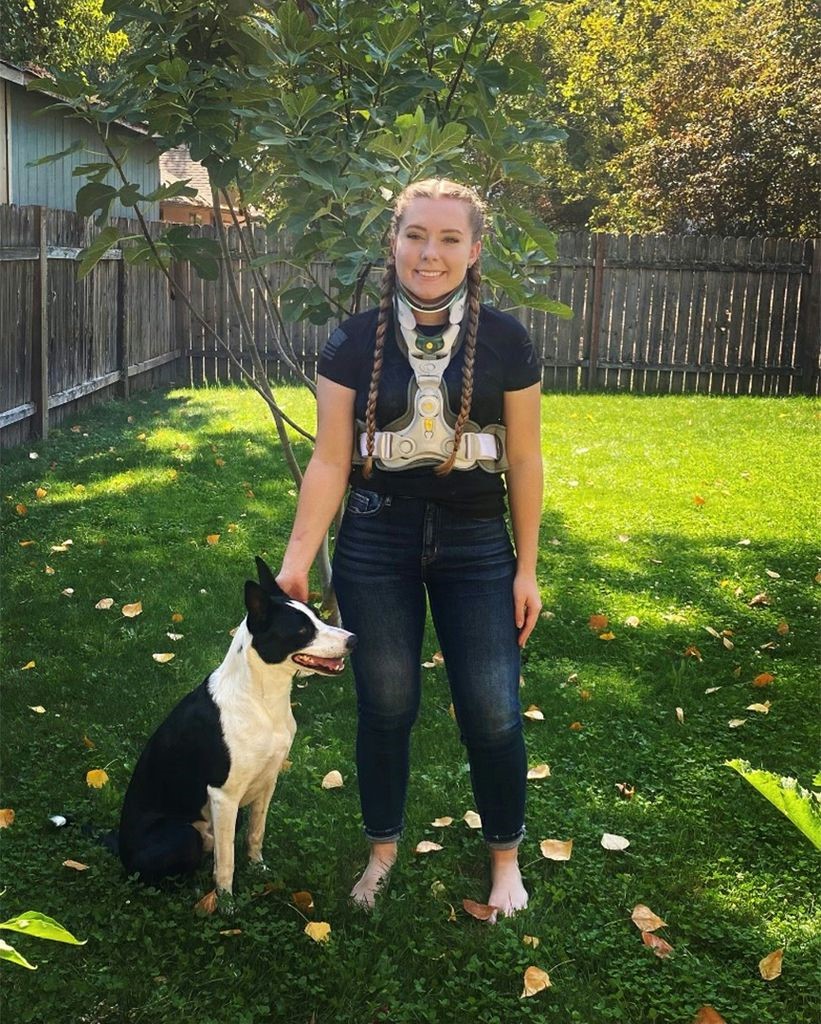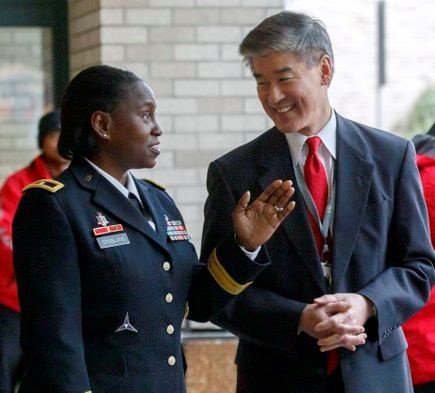For Patients

OHSU’s Trauma Center offers advanced, lifesaving care for major injuries. You’ll find:
- A team of nationally recognized leaders in trauma and acute care surgery, available 24/7.
- Specialists whose injury-specific care means a better chance of survival and recovery.
- Treatment tailored to you, with providers committed to continuous improvement.
- Coordinated care, from first response through discharge and rehabilitation.
- Treatments offered only at OHSU, such as advanced methods to stop bleeding, resuscitate patients and treat brain injuries.
- Access to research studies on the latest advances in trauma care.
Complete care
The OHSU Trauma Center offers state-of-the-art technology and world-class surgical care around the clock.
We are the only academic medical center in the region chosen as a Level 1 Trauma Center. This means that since its founding in 1998, our program has met the highest standards of care.
The American College of Surgeons and the state of Oregon review our performance in hundreds of areas to verify our Level 1 status.
OHSU’s trauma team also serves as a point of continuity, staying connected to your care from hospital admission through discharge and follow-up care in our Trauma Clinic.
We see more than 4,000 patients a year. Many have been seriously injured in a fall or a vehicle crash. Others have been hurt on the job or injured through gun violence or had a traumatic brain injury.
When you arrive at the Trauma Center, we use sophisticated tools to quickly diagnose your injury. Imaging tests may include:
- A rapid bedside ultrasound exam, or FAST (focused assessment with sonography in trauma). This test shows if you have internal bleeding around your heart or other organs. It helps us plan for surgery.
- A CT (computed tomography) scan. This test combines a series of X-rays to create detailed pictures of the inside of your body. It helps us see injuries that might not be obvious in a physical exam. These include blood clots, fractures, concussions and damage to your internal organs, nerves or spine.
On average, Trauma Center patients stay at OHSU for six days. During that time, your care team works closely with you to plan all of the services you need.
- In emergency situations, our surgeons treat you right away in the trauma operating room.
- If you’re seriously injured, we admit you to the trauma intensive care unit.
- For less severe injuries, you go to our trauma ward for evaluation and treatment. The ward serves acute and intermediate care patients.
- After your hospital stay, your follow-up care happens at our Trauma Clinic, held twice a week.
We use all the information available at the time of your injury to put together the right team at the right time.
- Critically injured patients are cared for by a 10-person team, including a trauma surgeon, trauma nurses and the chief trauma resident.
- Seriously injured patients receive care from a six-person team including the chief trauma resident, a trauma nurse and several emergency medicine providers.
Your trauma providers serve as the captains of your care team. We go on rounds to check on patients every day, monitoring and adjusting treatment plans so you get the best care.
Our department also holds monthly meetings to review information and combine our expertise on complex cases. When you need specialized care, we bring in experts from across OHSU.
Your trauma team may include:
- Trauma and acute care surgeons
- Trauma-focused nurse practitioners and physician assistants
- Nurses with additional training in trauma care
- Anesthesiologists
- Respiratory therapists
- Emergency medicine doctors
- Fellows in trauma surgery
- Pharmacists
- Chaplains and social workers
- Case managers
Specialists may be drawn from:
- Neurosurgery
- Orthopedics
- Spine care
- Organ transplant
- Ophthalmology
- Reconstructive surgery
- Other departments as needed
Your follow-up and rehabilitation team may include:
- Physical therapists
- Occupational therapists
- Speech therapists
- Pain management specialists
- Social workers
You may transfer to the Trauma Center from another hospital because you need specialized treatment or a higher level of care.
OHSU’s Patient Transfer Center operates 24/7 to make your transfer go as smoothly as possible.
The center fills several roles:
- It serves as an EMS communication hub. The center connects emergency providers in the field with OHSU trauma experts for advice, especially in complex cases.
- It coordinates patient transportation and admission. The Transfer Center keeps us up to date on your condition during transfer. This allows us to meet you with a care team and treatment plan in place.
The highest level of care
Injuries can happen any time, day or night. When you’re seriously hurt, it’s important to trust your providers to make the best possible decisions for your survival and recovery.
OHSU meets Level 1 standards because of our longstanding commitment to improving patient care.
Our team meets weekly to review cases, identify patterns and come up with ways to better serve our patients. We also compare our results with Level 1 trauma centers nationwide. All of these findings help us make sure you get the treatment you need as quickly and safely as possible.
Our efforts have led to changes such as:
- Giving antibiotics sooner to lower the risk of bone and joint infections.
- Using medication and whole-blood transfusion to stop bleeding as soon as possible.
- Adopting radiology techniques that avoid radiation exposure in children, to lower the risk of cancer later in life.
- Adding rehabilitation care such as physical therapy, occupational therapy or speech therapy as early as possible during recovery.
Our case managers make sure you have a plan for after your hospital stay. They will connect you with resources to make your discharge easier. For some patients, that means transitioning to a skilled nursing facility. For others, it means going home and getting rehab or follow-up care through our Trauma Clinic.
Our case managers also can connect you with OHSU social workers to support any emotional and social needs related to your heath, and make sure you have the medical equipment you need to move around safely.
Patient education
As you recover from a traumatic injury, it’s important to understand the changes you may need to make in your daily life.
Our team can help you:
- Choose a cane, walker, bath seat and other medical equipment to lower your chances of a fall.
- Learn exercises that help you prevent falls, change positions or stand up quickly without getting dizzy.
- Navigate busy streets safely when using a walker or cane.
Choose from the videos below to see more from this series.
02 Exercises to Prevent Falling
This video describes exercises that can be done to prevent falling by strengthening muscles in the legs and improve balance.
03 Home Modifications to Prevent Falling
This video describes how to reduce the fall risk at home by modifying the space, how proper footwear can reduce fall risk at home, and how lighting can reduce fall risks.
04 How to Conserve Energy
This video discusses how prioritizing tasks can help to conserve energy and describes tips to conserve energy to avoid falls.
05 How to Get up from a Fall
This video describes how to use your body and furniture or stairs to get up from the floor after falling.
06 Standing Up safely
This video describes how to change positions or stand to avoid falling.
07 Pedestrian Safety
This video describes how to safely use assistive devices when walking out doors and provides safety demonstration for how to cross at a pedestrian controlled light.
08 Safety Precautions to Prevent Falls in the Bathroom
This video reviews adaptive equipment for the bathroom to prevent falls.
Additional fall prevention information
- STEADI: Older Adult Fall Prevention, U.S. Centers for Disease Control and Prevention
- STEADI Provider Training, CDC
- Prevent Falls and Fractures, National Institutes of Health
- Exercising with Chronic Conditions, National Institute on Aging
- Get Fit For Life: Exercise and Physical Activity for Healthy Aging, National Institute on Aging
- Fall-Proofing Your Home, National Institute on Aging
- Falls Prevention for Older Adults, Oregon Health Authority
Research and innovation
Because we are part of an academic medical center, the Trauma Center combines outstanding care with leading-edge research.
Our team publishes its findings in top scientific journals and earns funding from the National Institutes of Health and the U.S. Department of Defense, among others.
Our discoveries also have a direct impact on patient care. Recent projects have looked at ways to:
- Make mass blood transfusions more effective.
- Limit the use of opioids in the treatment of traumatic wounds.
- Address ventilator shortages through 3-D printing technology.
- Identify patients who are likely to get PTSD or depression after a traumatic injury.
- Better understand how traumatic brain injuries affect sleep patterns.
If you are a candidate for one of our research studies, your care team will discuss it with you.
For patients and families
For information about OHSU Trauma Clinic’s follow-up care, reach out to us at 503-494-5300
Our experts are available through the Trauma Program. Contact us at trauma@ohsu.edu
Transfer a patient
Initiate a patient transfer with one call.
• 800-648-6478 (toll-free)
• 503-494-7000

‘Remarkable recovery’
Thanks OHSU’s trauma ICU team, Marin Metz is walking again after a dirt-bike crash initially left her paralyzed. Read about Marin's recovery.

Taking lessons of the battlefield into the trauma ward
OHSU is the first hospital on the West Coast to host the Army Military Civilian Trauma Team Training program, in which Army medical personnel work alongside local trauma care providers.